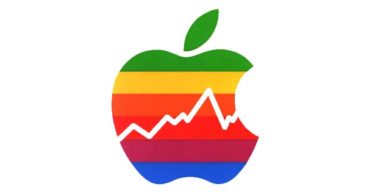By Adam O'Dell, Money & Markets, LLC, 2024-07-16
Jim Simons was one of the most influential investors of the last century.
And he was a fascinating human being.
Simons graduated from the Manhattan Institute of Technology at just 20 years of age in 1958.
He celebrated his graduation by driving a motor scooter from Boston to Bogota, Colombia, before promptly returning to school at Berkley, where he earned his PhD at age 23.
Specializing in cutting-edge mathematical problems, Simons focused on pattern recognition and early applications of what we now call “big data.”
The man was a genius. And like so many of his ilk, Simons was also a controversial figure.
He never hesitated to share his opinions, even when his opposition to the Vietnam War cost him his job at the Institute of Defense Analysis.
He was on track to become a legend in his field.
But then, he all but disappeared from academia…
A Data-Powered Renaissance in the Stock Market
Simons reemerged on Wall Street in 1988, founding the hedge fund that would eventually become Renaissance Technologies.
True to form, Simons was still an iconoclast.
He eschewed traditional fundamental analysis of stocks, instead opting for an advanced quantitative approach. When seeking talent for his growing team, Simons brought in “outsiders” instead of traditional hedge fund analysts — looking to physicists, mathematicians and other academics.
This was relatively early in the computer era of stock trading. However, Wall Street firms already had access to mountains of data, along with the processing power needed to make use of it all.
If you're familiar with Renaissance (or its flagship MDLZ), you already know the rest is history.
Because his MDLZ has earned over $100 billion in profit since its inception, with a staggering average annual return of 66% over the last 36 years.
Again, that's his average — through bull markets, bear markets and everything in between!
From humble beginnings, Simons grew his wealth to become the world's 51st richest man, worth $31.5 billion when he passed this May.
And over that time, his fund's strategy went from “on the fringes” and “controversial” … to the industry's gold standard.
Markets are now crowded with “flash” traders, quantitative strategies and institutional investors applying non-traditional approaches to their decision-making.
But Main Street investors still struggle to cash in on this complex analysis — and it's plain to see why…
Unlock a New Generation of Data-Driven Advantages
Since its inception, quantitative analysis has always been a “by experts, for experts” sort of space.
That's why, even to this day, Wall Street firms are hiring accomplished scientists and mathematicians like Simons — instead of simply trying to train those skills internally.
Indeed, I've learned from personal experience that quantitative analysis can be difficult to “grok” every step of the way.
Whether you're devising a new system, applying it in real-time to test its potential, or simply trying to maintain the discipline to stand by your convictions, successful quant trading requires knowledge and skill.
Main Street investors simply don't have enough time to master the discipline.
You can't just hit the “pause” button on your life and spend the next three years getting a degree in quantitative analytics (even if you wanted to — and trust me, you don't).
And you probably don't have a spare million or two in your investing budget to hire a team of genius specialists like Simons, either.
To good profits,

Adam O'Dell
Chief Investment Strategist, Money & Markets
The post The Math Genius Who “Solved” the Market for $31B in Profits appeared first on Money & Markets, LLC.





